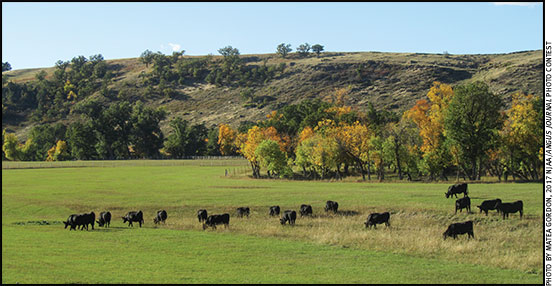
The Mystery and Magic of Minerals
Mineral deficiencies and antagonisms play a role in reproductive performance.
 Cattle need and want salt. A cow brute will seek and consume the salt needed to satisfy her craving. However, she does not possess the same “nutritional wisdom” regarding other minerals she needs in her diet, according to University of Florida animal scientist John Arthington. A researcher who studies the interactions between nutrition and physiology of cattle, Arthington talked about mineral supplementation during the Applied Reproductive Strategies in Beef Cattle (ARSBC) symposium Aug. 29-30 in Manhattan, Kan.
Cattle need and want salt. A cow brute will seek and consume the salt needed to satisfy her craving. However, she does not possess the same “nutritional wisdom” regarding other minerals she needs in her diet, according to University of Florida animal scientist John Arthington. A researcher who studies the interactions between nutrition and physiology of cattle, Arthington talked about mineral supplementation during the Applied Reproductive Strategies in Beef Cattle (ARSBC) symposium Aug. 29-30 in Manhattan, Kan.
Focusing on cattle consuming diets consisting of grazed forages, Arthington said trace minerals are often lacking in forages, especially warm-season grasses, in various parts of the country. Minerals also may not be present in balance, such that an excess of one mineral presents an antagonism that inhibits absorption or utilization of a different mineral.

“Among microminerals, zinc, selenium and copper are most important to reproduction, but also for any process that requires rapid cell division and development,” stated University of Florida researcher John Arthington.
Arthington said that, in most situations, the effects of mineral nutrition on reproduction are secondary to impacts on other physiological functions. Deficiencies in macrominerals (calcium, phosphorus, potassium, magnesium and sulfur) most often present themselves as depressed growth, diminished nerve function and disruption of the body’s acid/base balance. However, three microminerals, or trace elements (zinc, selenium and copper), are commonly associated with reproductive function in beef cattle.
“Of the macrominerals, phosphorus has received the most attention when considering reproductive responses of grazed beef cattle,” said Arthington, noting that phosphorus has more biological functions than any other mineral and typically contributes most to the total cost of mineral supplements.
“Among microminerals, zinc, selenium and copper are most important to reproduction, but also for any process that requires rapid cell division and development,” stated Arthington.
Supplementing the diets of young, developing bulls with relatively high levels of zinc is common, added Arthington, because the micromineral is essential to testicular development and spermatogenesis. Adequate dietary zinc also is important to maintaining hoof integrity.
Arthington explained that copper and selenium are essential to the production of multiple enzymes linked to reproduction, immune function and growth. They are often the most limited trace minerals in forages, and both are antagonized by sulfur. He emphasized that the most common type of mineral deficiency is a secondary deficiency where, despite adequate mineral intake, the deficiency results from the antagonistic influence of another element.
Explaining how mineral antagonisms have fooled people in the past, Arthington said, “It has been said that copper deficiency leads to reproductive failure, but it’s typically molybdenum and sulfur that are causing the problem, but we supplement copper to overcome it.”
The selenium content of forages is low in many parts of the United States, and Arthington says many well-managed herds wean calves that are marginally deficient. Selenium deficiency in calves is linked with white-muscle disease, and Arthington also believes that a deficiency in gestating cows may be connected with “weak calf” syndrome.
Arthington said the debate continues regarding whether “organic” or chelated mineral supplements are superior to inorganic minerals. He said research has not necessarily supported claims that chelated minerals enhance reproductive performance among mature cows. However, Arthington says, young, stressed cattle may exhibit a positive response to chelated minerals.

Editor’s Note: Troy Smith is a cattleman and freelance writer from Sargent, Neb.






